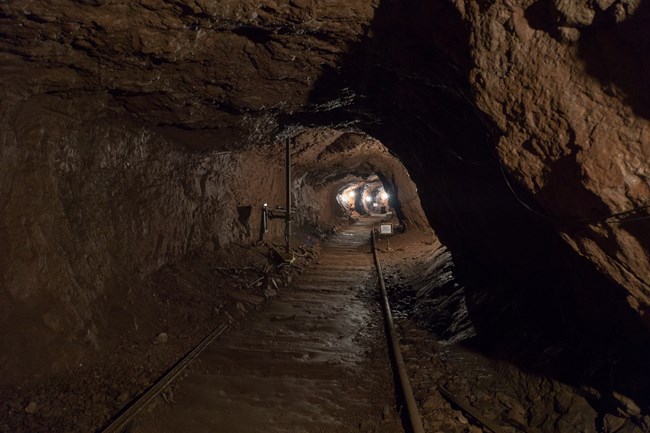
NPS Photo by Nathan Miller
The Benedict and Burnham Manufacturing Company in Waterbury, Connecticut, used Keweenaw copper in their brass door handles, furniture knobs, safety pins, rivets, bolt hinges, buttons, and lamps. Other companies produced photographic supplies and camera parts. Ever use Revere Ware pots and pans? They were produced by Revere Copper and Brass Incorporated, a consistent buyer of Keweenaw copper. The list goes on.
Oyler’s research revealed Keweenaw copper had a tremendous number of uses. It filled the needs of numerous American industries and was important in modernizing the country--even the world. Trans-Atlantic cables, telegraphs, electricity, and the auto industry all relied on Keweenaw copper when they first began. The United States government used Keweenaw copper in three major wars. When industry did not demand copper, the Keweenaw mines sought new markets and helped find new uses.
Oyler’s historical research resulted in a paper that directly contributed to the creation of a timeline exhibit featured in one of Keweenaw National Historical Park’s contact stations, as well as a timeline available on the park website.
Visit https://www.nps.gov/kewe/learn/historyculture/copper-mining-timeline.htm to learn more.
Last updated: September 29, 2019
